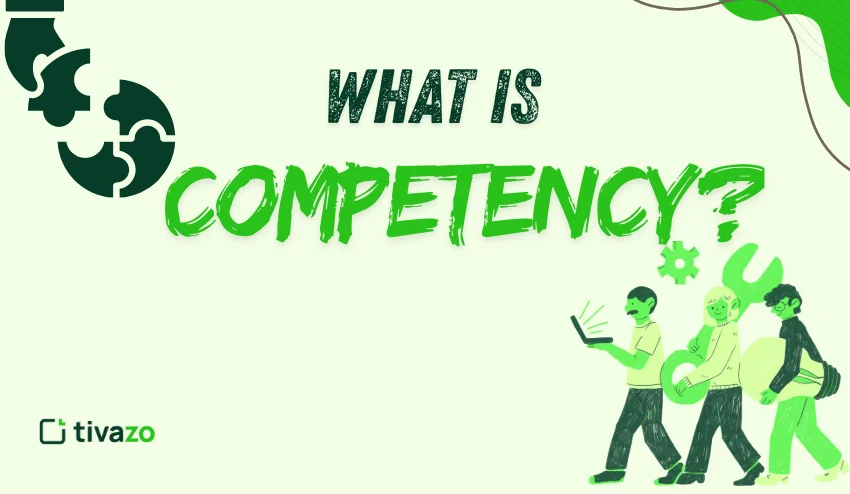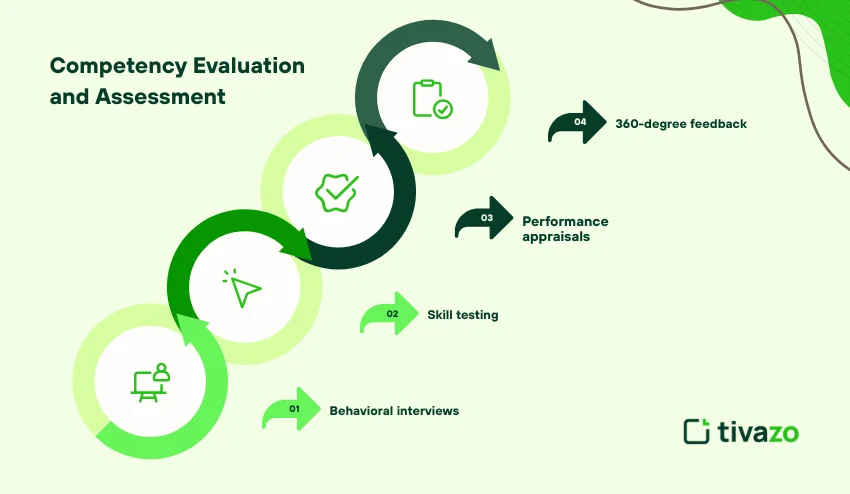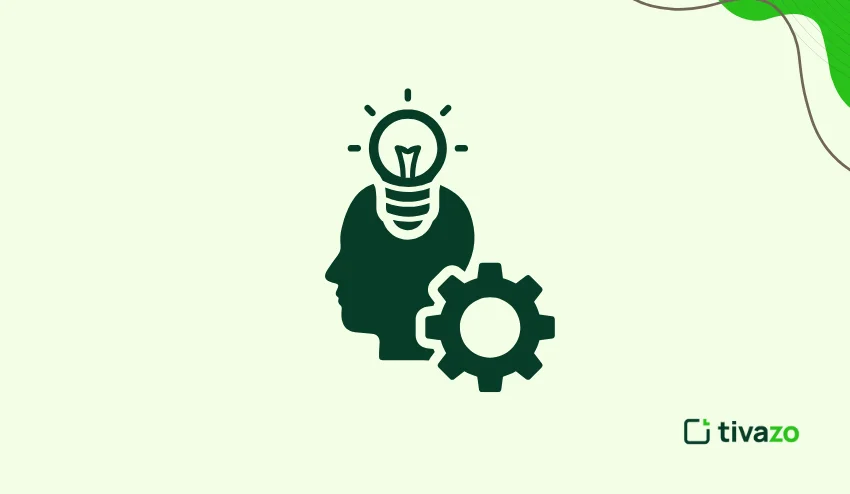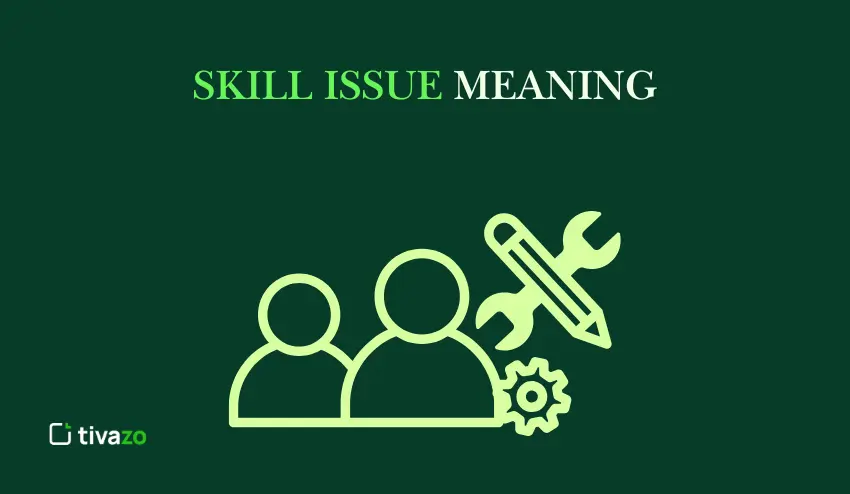The meaning of competency, or rather the question of self-though on what is competency meaning, is a key understanding that is vital to professionals, supervisors, and organizations. Skills, knowledge, and behaviors necessary to be able to effectively perform in a role are defined by competencies. They act as a basis of career growth and development, performance appraisal, and self-development. This blog will dwell upon the necessities, examples, types, and successful applications of competencies to enable you to understand the concept to the fullest and successfully use it even in the workplace.
What is Competency in Simple Words?
Expressed simply, competency meaning the capability of an individual to act or do a job or job successfully. It is a combination of skills, knowledge, and behaviors that enable one to deliver desirable outcomes all the time. Competencies do not only center on what the individual knows; they also encompass how he/she use the learnt knowledge and also exhibits the correct behaviors in various circumstances.

Key points:
- Skills + knowledge + behaviors = competency
- Evaluates performance and measures.
- Can be applied to any job role
The competencies are vital as they assist organizations to find the right individuals to occupy the right positions, tasks are done in an efficient way, and a structure of the profession development is obtained. In the case of employees, competency meaning awareness assists them in concentrating on the enhancement of the particular skills that are vital in their professional development.
Which is an Instance of Competency?
The examples can be used to explain the meaning of competency meaning in life. Competencies can be exemplified by actions, skills, and behaviors that result in a positive outcome in a position. Through the analysis of real-life examples, one is better placed to know how the competencies are applied to real-world performance.
| Job Role | Competency Sample | Description |
| Customer Service | Communication | Ability to effectively communicate, clearly translate information, and address enquiries to customer satisfaction. |
| Software Engineer | Problem Solving | Capability to debug and deal with code problems effectively and within project deadlines. |
| Supervisor | Leadership | Skilled at guiding and motivating others to accomplish the goals and holding the team together. |
Examples of competency meaning differ depending on the role and industry; however, they all revolve around the application of knowledge, skills, and behaviors that would bring a professional to work. The comprehension of these examples will assist the employees and the managers in knowing where to improve and develop.
Why Are Competencies Beneficial for Supervisors?
The reason why supervisors can use knowledge of competency meaning is that it enables supervisors to:
- Assess the performance of the employees objectively.
- Determination of training and development needs.
- Delegate tasks according to competence.
- Enhance team performance and participation.
- Establish explicit expectations and standards of performance.
- Identify the high-potential employees to be promoted or given leadership.
- Develop a culture of self-accountability and continuous improvement.
- Improve teamwork and alignment competencies with the project’s needs.

Using competencies, supervisors will be able to make decisions to maximize the performance of teams and to achieve the organizational objectives effectively.
What does Competency mean in Medical Terms?
The meaning of competency meaning in medical terms is the capacity of a medical professional to be able to perform medical tasks safely and effectively. This includes:
- Professional skills (surgery, diagnostics)
- Skills in communication (interaction with the patient)
- The moral conduct as well as judgment.
- In clinical judgment and critical thinking.
- Medical protocols and procedures.
- The capability to deal with unforeseen events and emergencies.
- Teamwork skills towards other medical personnel.
- Determination to engage in lifelong learning and keep up with developments in medicine.
- Medical practice competency meaning guarantees patient safety, quality care, and successful cooperation of medical workers.
What is the Meaning of Competency in a Job?
Applied to a job, competency meaning can be used to define the skills and behaviors necessary to perform that job.
Employers use it to:
- Hire the appropriate candidates.
- Set performance standards
- Line up employee interests with organizational aims.
Examples:
- Administrative assistant: Organizational skills.
- Marketing manager: Strategy thinking.
- Nurse: Compassionate, caring, and nursing.
What are Skills Competencies?
Skills competency’s meaning is very specific to abilities that can be applied in carrying out tasks efficiently. It is the main element of knowing competency meaning since it emphasizes what employees should know to perform in their positions. Skills competencies guarantee that individuals will be able to perform job expectations on a regular basis and contribute to organizational objectives.
They can be classified as:
- Technical skills: These are job-specific skills like coding, accounting, operating a machine, analyzing data, or performing medical procedures. These are quantifiable and can be formal training or certification.
- Soft skills: The interpersonal and behavioral skills, such as communication, teamwork, leadership, adaptability, problem-solving, and time management. These are essential competencies of teamwork, as well as productivity in the workplace and good working relationships with fellow staff and clients.
Both technical and soft skills competencies can enable employees to undertake their work efficiently and adapt to new workplace situations and to develop their professions. Skills competency meaning frameworks are used by organizations to address gaps, train, and enhance the overall workforce performance.
What is a Competency Model?
A competency model is a framework that outlines the knowledge, skills, and behaviors that are required to be successful in a particular job or organization.
Elements of a competency model:
- Core competencies – can be applied to all employees.
- Role-specific competencies – job-specific.
- Managerial skills, Leadership – managerial positions.
Example Table:
| Type of competency | Definitions | Sample |
| Core | All employees | Teamwork |
| Role-specific | Job-specific | coding (Software Engineer) |
| Leadership | Managers | Decision Making |
Various kinds of Competency
The competency meaning is also associated with being aware of its types:
- Core Competencies – The core competencies are the skills every worker must possess, like teamwork, communication, and problem-solving skills, which are the pillars of workplace efficiency.
- Functional/Technical Competencies – These are specific to specific job roles, such as software engineering, coding, or financial analysis of accountants.
- Behavioral Competencies – Behavioral and personality traits such as adaptability, emotional intelligence, and conflict resolution.
- Proficiency Areas – Abilities required to lead teams, make strategic choices, and influence other people to succeed in achieving organizational objectives.
- Managerial Competencies– Abilities to coordinate processes and people effectively, encompassing planning, organization, and performance management.

Both kinds of competencies are critical to the overall performance. Knowing these types of organizations may design training programs in a better way, assess employees efficiently, and make sure that not only personal but also team goals are consistent with the business goals.
How to Develop Competencies
Career growth and enhancing performance in general require the development of competencies.
Here are some steps:
- Determine the competencies needed in your job – Learn what jobs, knowledge, and skills are required to perform in your present job or the job of your choice.
- Self-assess your level of skills – Determine your weaknesses and areas where you need improvement so that you concentrate your learning process accordingly.
- Undertake training sessions and workshops – Undergo training, certification, or practical workshops to develop both technical and soft skills.
- Request supervisor feedback – Request supervisors to provide feedback regularly to know areas of weakness and areas of improvement.
- Monitor progress and modify learning plans – Track your development, use milestones, and fine-tune your development plan.
- Mentorship and coaching – Be guided by more seasoned colleagues/mentors to learn practical mentoring.
- On-the-job practice– Use the new skills in practice in a real work situation to consolidate learning and develop confidence.
- Participate in professional circles – Attend industry associations, discussion boards, or networks to monitor the latest developments and best practices.
Through these steps, the employees are able to improve their competencies, become more valuable in the workplace, and the career ladder is likely to be quick.
Competency Evaluation and Assessment
To achieve the competency standards, organizations tend to assess the abilities of their workers.
Common methods include:
- 360-degree feedback – Gathers feedback on performance by the supervisor, peer, and subordinates to develop a comprehensive assessment of performance.
- Performance appraisals – Compare the employee’s performance with the set objectives and skills.
- Skill testing – Tests technical and job-related skills to determine competence meaning.
- Behavioral interviews – This is to examine how employees can exhibit competencies based on previous experiences and problem-solving situations.

Benefits:
- Determines skill gaps to be subject to training and development.
- Manages career development and succession planning.
- Enhances team productivity.
- Improves employee engagement through expectations.
- Facilitates evidence-based HR/talent management.
Competency assessment will make certain that employees are prepared to do their jobs well, match the skills of the workers to the objectives of the organization, and encourage the culture of learning and continuous improvement.
Competency Meaning Summary
The competency meaning concerns what the employees know, the way they behave, and the quality of their skill application. Understanding competencies:
- Helps organizations to effectively handle talent by aligning skills to the business goals.
- Enables the employees to develop professionally and advance their careers.
- Provides good performance in various positions, enhancing productivity.
Further, there is clear knowledge of competencies which can be used to develop better training programs, make sound decisions on recruitment, and also on performance appraisal. It instills a culture of constant progress, responsibility, and professional growth, and this makes the employees and the organizations successful in the long term.
Conclusion
The concept of competency meaning is described as the skills, knowledge, and behaviors one needs to demonstrate to be efficient at work. It offers practical and real-life examples of various positions, such as customer service, software engineering, and supervision, and demonstrates how the competencies can be put into practice. The blog emphasizes the significance of supervisor and employee competencies, such as performance management, training need identification, and team efficiency enhancement. It also discusses the competencies in medical, technical, and leadership situations, various kinds of competencies, and competency meaning models.
It has practical steps of developing and assessing the competencies, which include self-assessment, training, mentorship, and performance evaluation. The sense of what is competency meaning can also be understood to enable employees to develop, organizations to manage talent effectively, and a culture of constant learning, responsibility, and enhanced performance at the workplace.




